Subphylum Uniramia - the
centipedes, millipedes, insects, and others
(Unless otherwise noted, all photos and
diagrams are from: http://biodidac.bio.uottawa.ca/)
5 Classes, here are the
3 best known classes:
Class Chilopoda: the centipedes
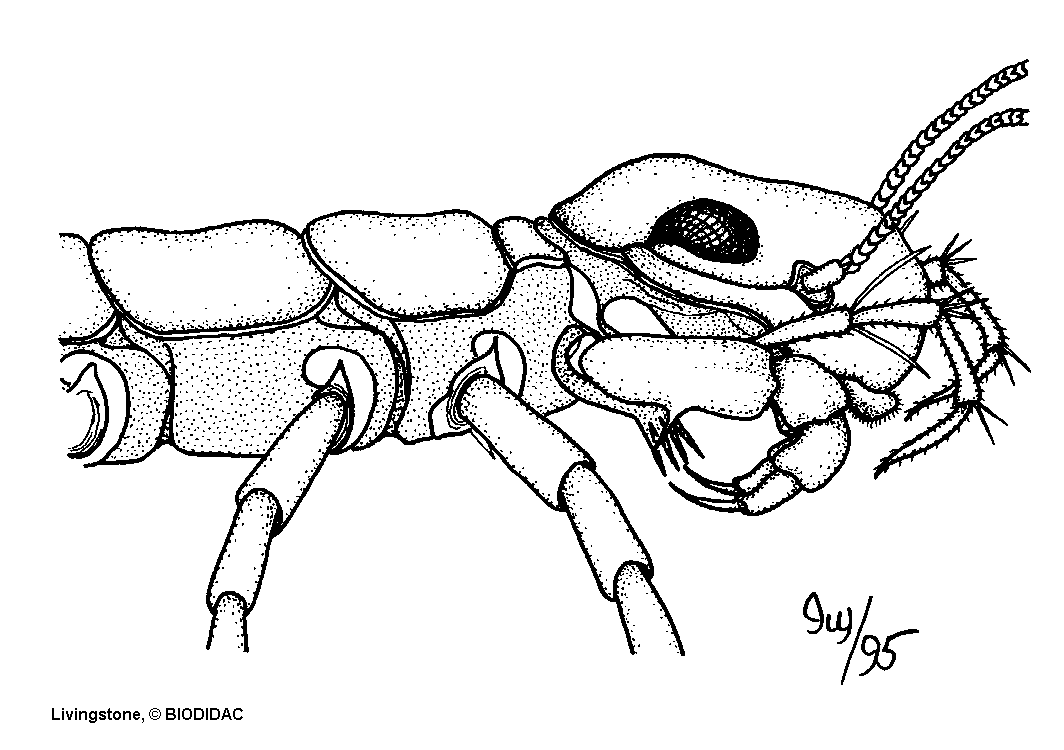
Class Diplopoda: the millipedes
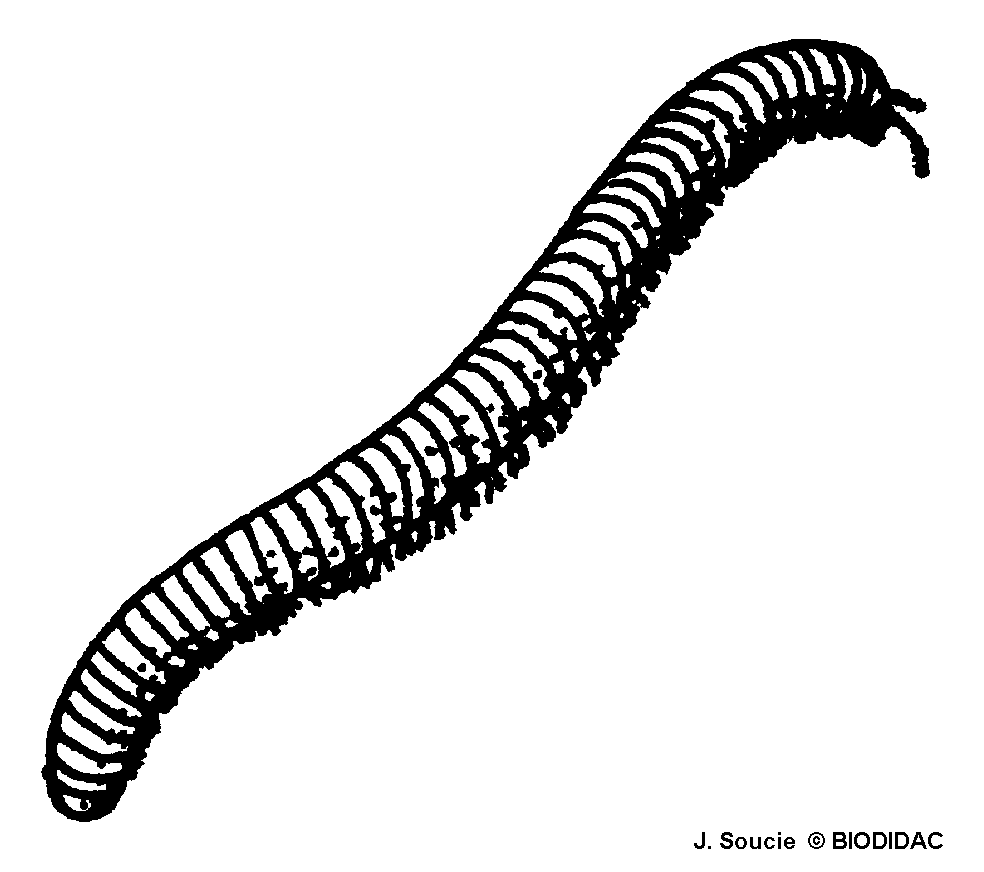
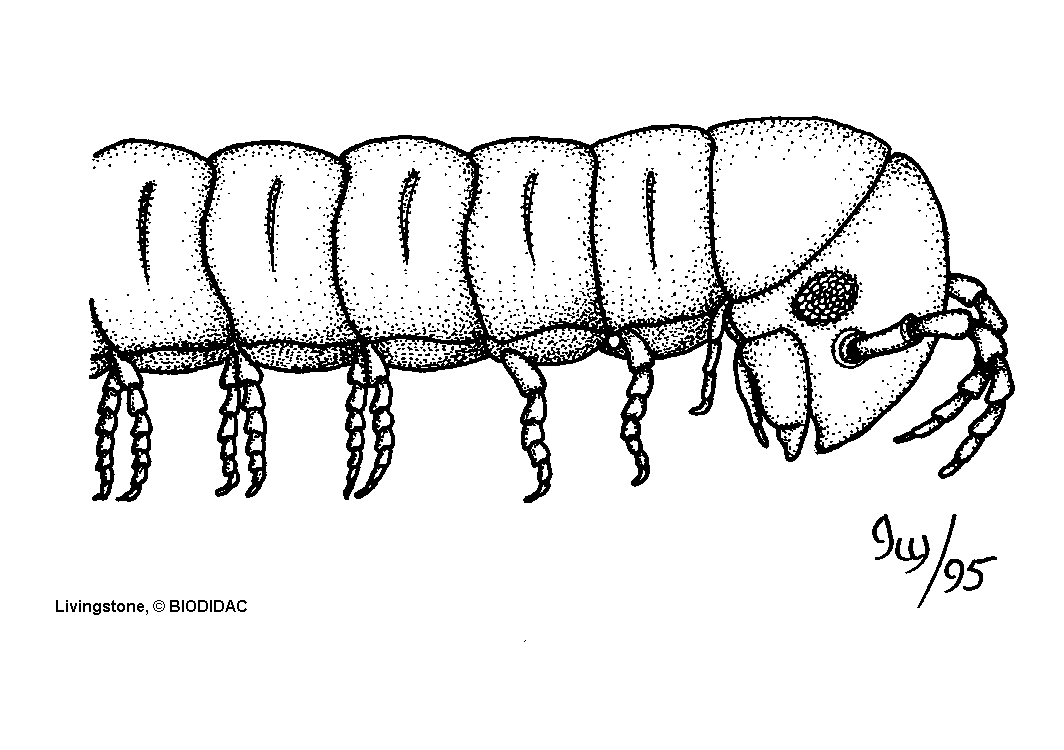
Class Insecta: the insects
Importance of Insects:
Brief overview of insect anatomy and physiology:
3 body segments
Head
diverse specialized mouthparts
one pair of antennae
pair of compound eyes plus extra ocelli
Thorax
3 pairs of legs attached to thorax - 6 legs total
2 pairs of wings in most adult insects (only adults have wings!)
Abdomen (normally with no appendages)
Mouth
Many insects have chewing mouthparts
e.g. grasshopper: http://www.insectsexplained.com/img/0309.JPG
Many others have piercing-sucking mouthparts
e.g. mosquito:
http://www.dorlingkindersley-uk.co.uk/static/clipart/uk/dk/exp_insect/exp_insect048.jpg
http://www.micrographia.com/specbiol/helmint/nematod/nema0100/mo171ims.gif
Compound eyes (typical of most arthropods)
eyes with muliple facets
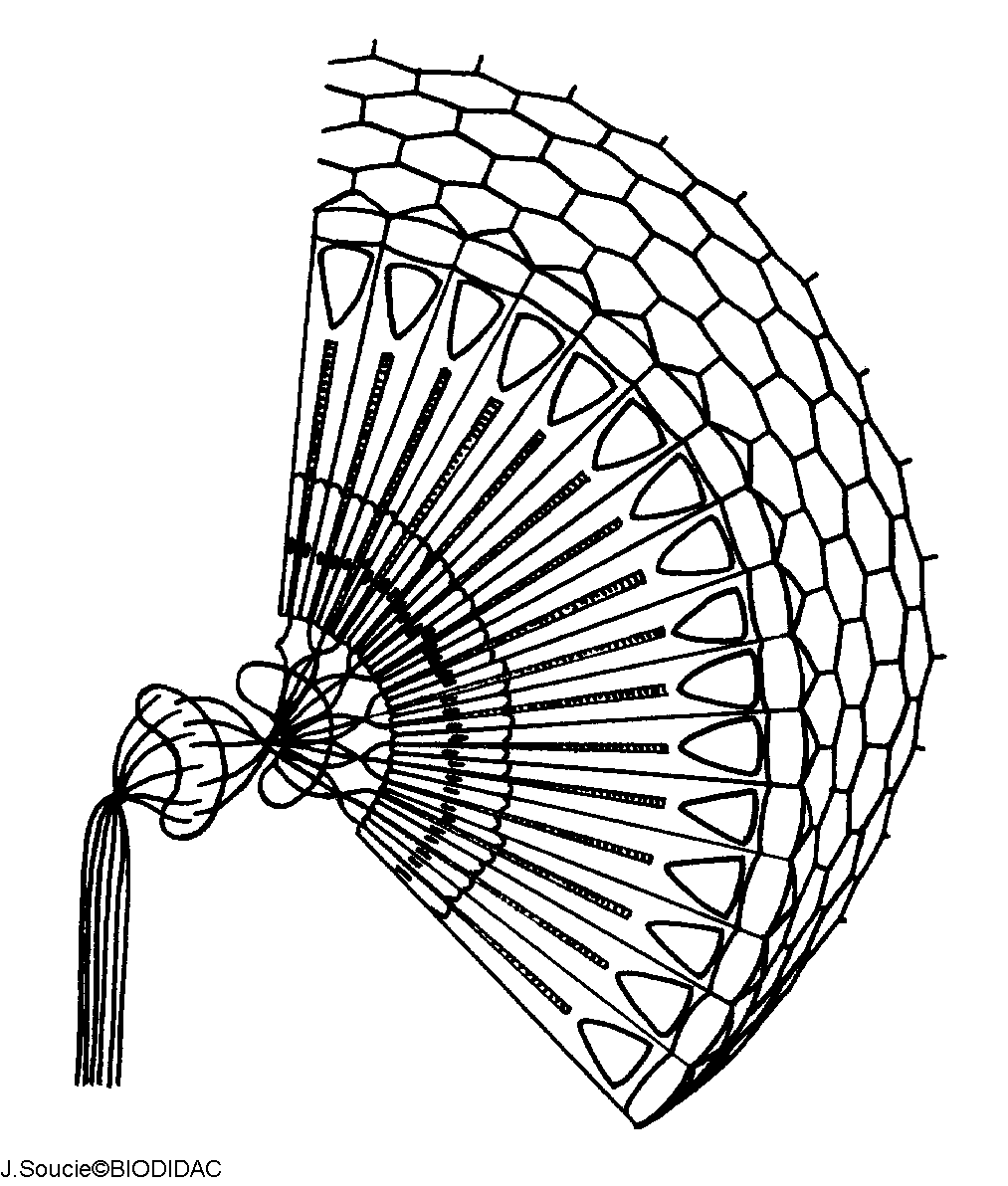
Open circulatory system
Diagram of bee, showing heart (with multiple ostia) and
blood vessels in red. Digestive system is in orange.
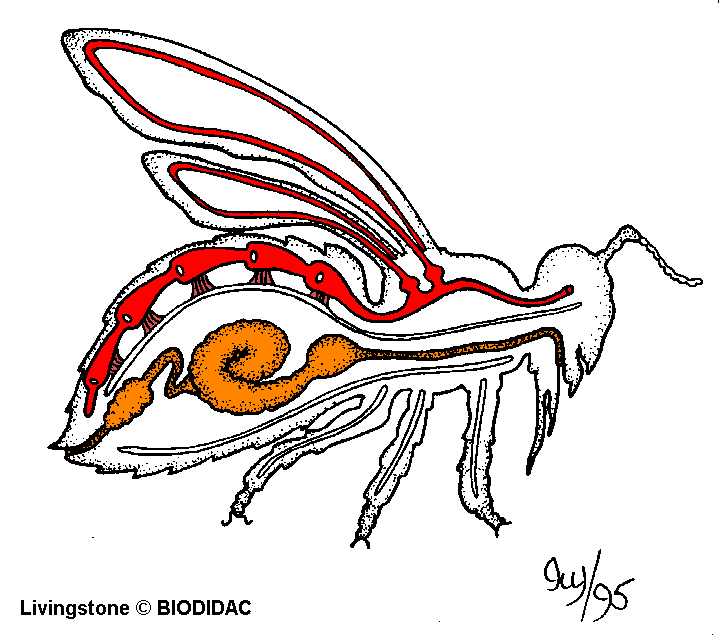
Blood is taken in through ostia, pumped forward, dumped
into body cavity, flows back to ostia of heart
Respiratory system
Breath through spiracles on side of abdomen
Air reaches cells via tracheal system
insect body is permeated by air tubes!
no cell is very far from tracheal system
Some insects (especially larger ones) expand and contract
abdomen rhythmically to improve air exchange
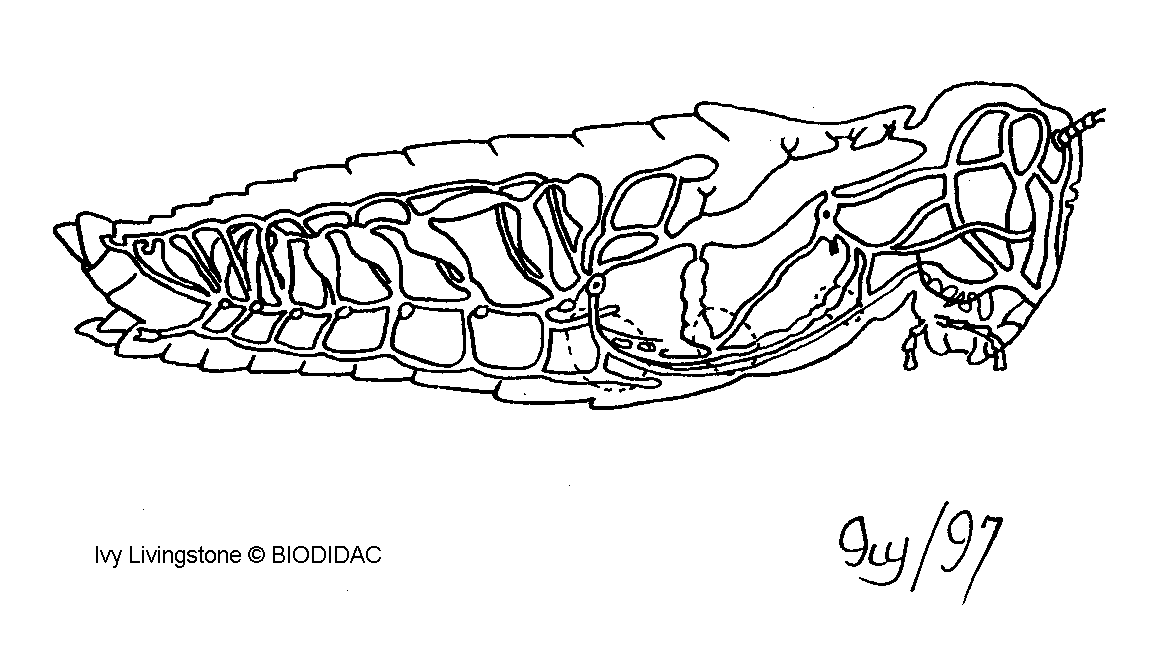
Also see: cross
section of an insect, showing tracheal system
Photo of tracheal system in dissected Manduca sexta caterpillar
2 main types of development:
Incomplete (gradual) metamorphosis
Juveniles (nymphs) look like miniature adults without
wings.
Nymphs often have very similar lifestyles to adults,
eat same food, etc.
e.g., grasshopper:
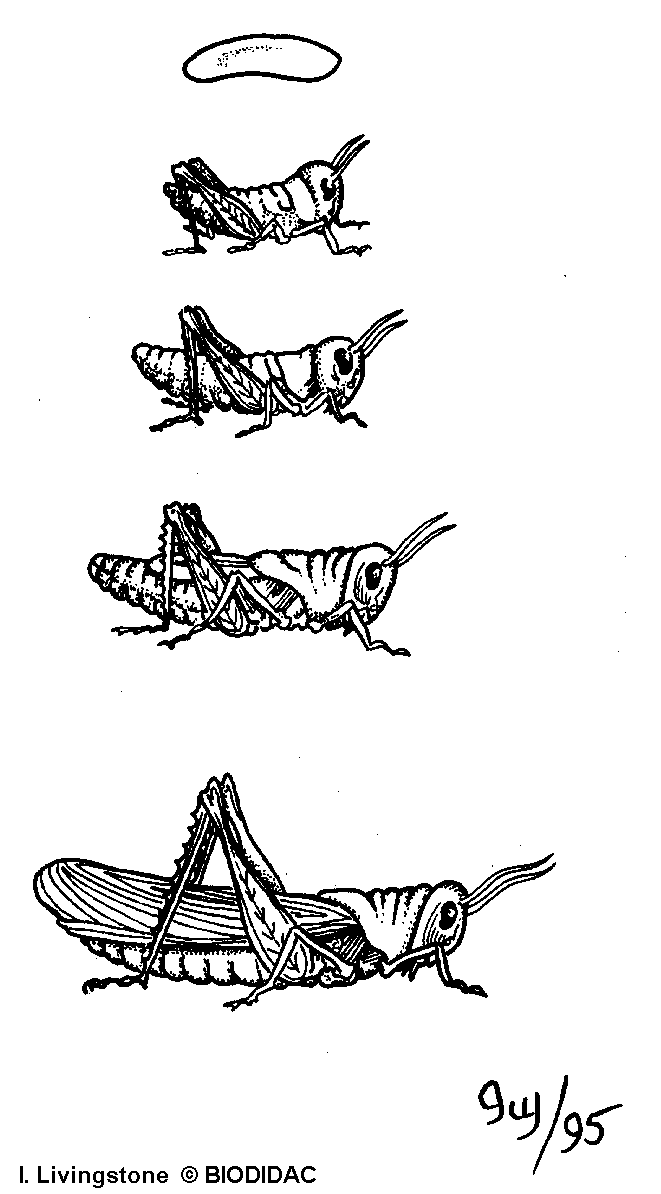
Complete metamorphosis
Juveniles (larvae) are worm-like or grub-like eating/growing
machines that look nothing like adults
Larvae usually have completely different lifestyles from
adults, eat different foods, etc.
Allows a species to exploit greater variety of food resources
Reduces competition between larvae and adults
Many of the most successful groups of insects have complete
metamorphosis
Pupal stage
amazing transitions take place!
nearly all of body cells break down into a chemical soup
only small disk of cells remain intact
adult body is built from scratch using resources accumulated
by larva
Examples of complete metamorphosis:
Moth
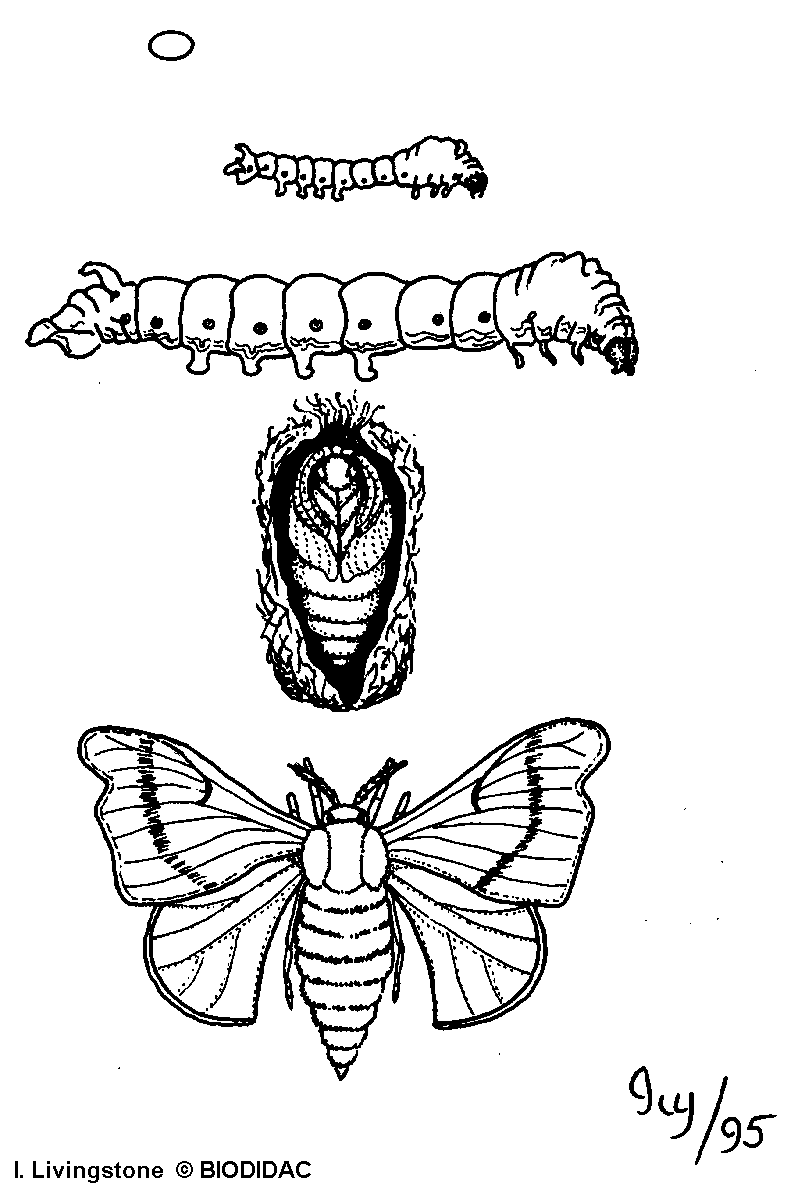
Beetle
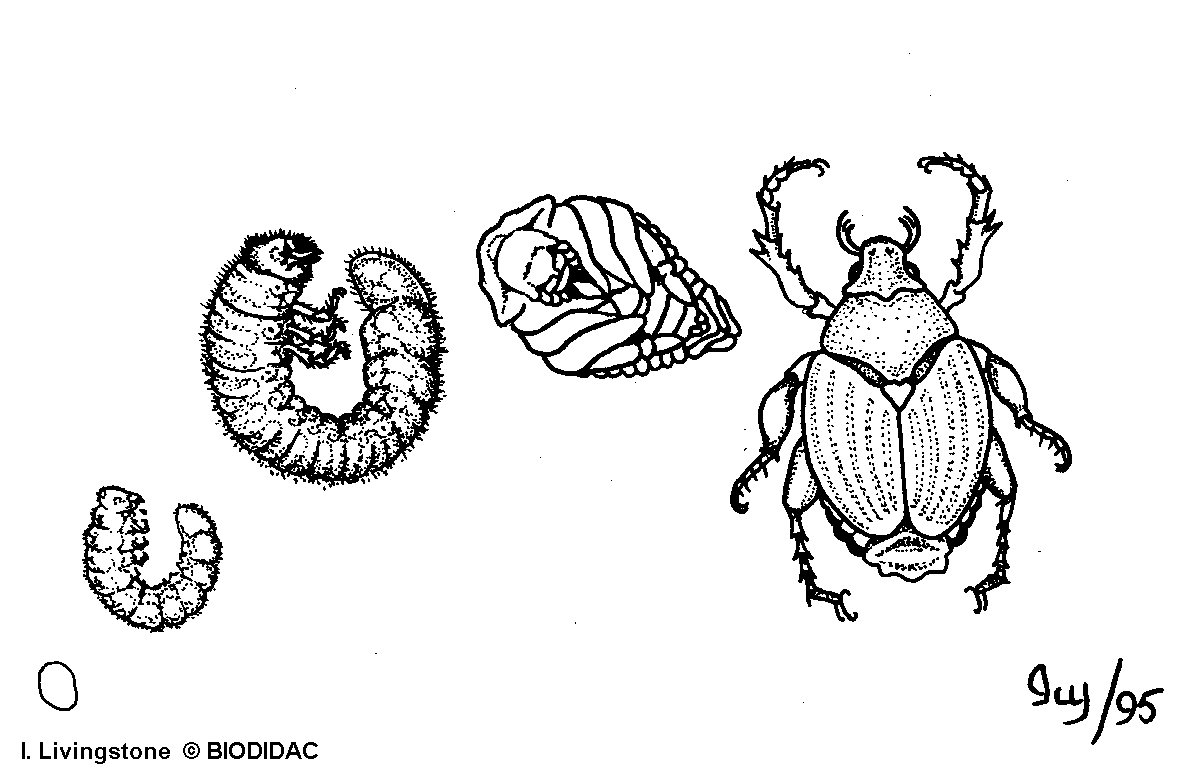
Flight
The single most remarkable thing about insects!
Has contributed to incredible insect success
exploitation of food resources
dispersal
escape from predators
ONLY ADULT INSECTS HAVE WINGS
Acquired in an individual's last molting
If an insect has wings, you KNOW it is an adult (even
if very tiny)
Some adult insects are wingless
Some entire orders are wingless (e.g. fleas, lice, silverfish)
Some entire species in otherwise winged orders are wingless
Some individuals in some winged species are wingless
e.g. worker ants
worker and soldier termites
some female moths,
most aphids (only some indivduals in population have
wings)
etc.
etc.
(lots of examples of this)
Overview of insect diversity:
Approx. 31 orders
approximate because some orders are lumped by some entomologists,
split by others
Most orders are very common and abundant nearly everywhere
Most orders contain multiple families
Some orders contain MANY families!
Some of the more familiar
insect orders:
Thysanura - silverfish (and others)
(recently split into two new orders, but this old name will work for our purposes for now)
incomplete metamorphosis
wingless, with long tail-like appendages on tip of abdomen
chewing mouthparts
common household pests (eat starch on paper in books,
for example and many other things)
Page with nice
photo of silverfish
Silverfish
info
Information on firebrats
Thysanura development
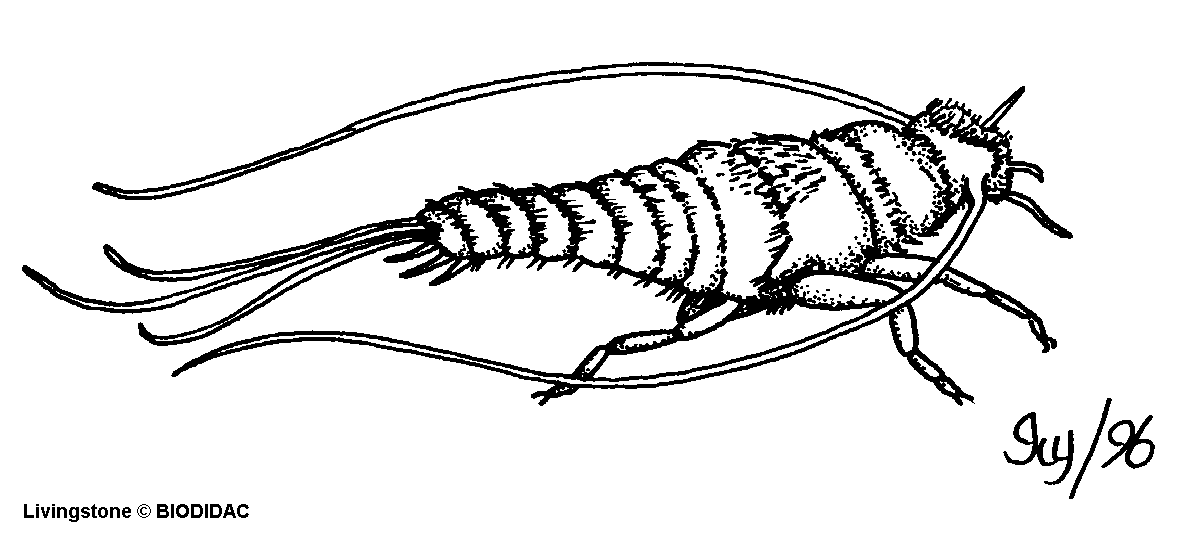
Ephemeroptera - mayflies
Diagram of mayfly adult
(lacks functional mouthparts and live just
a few days)
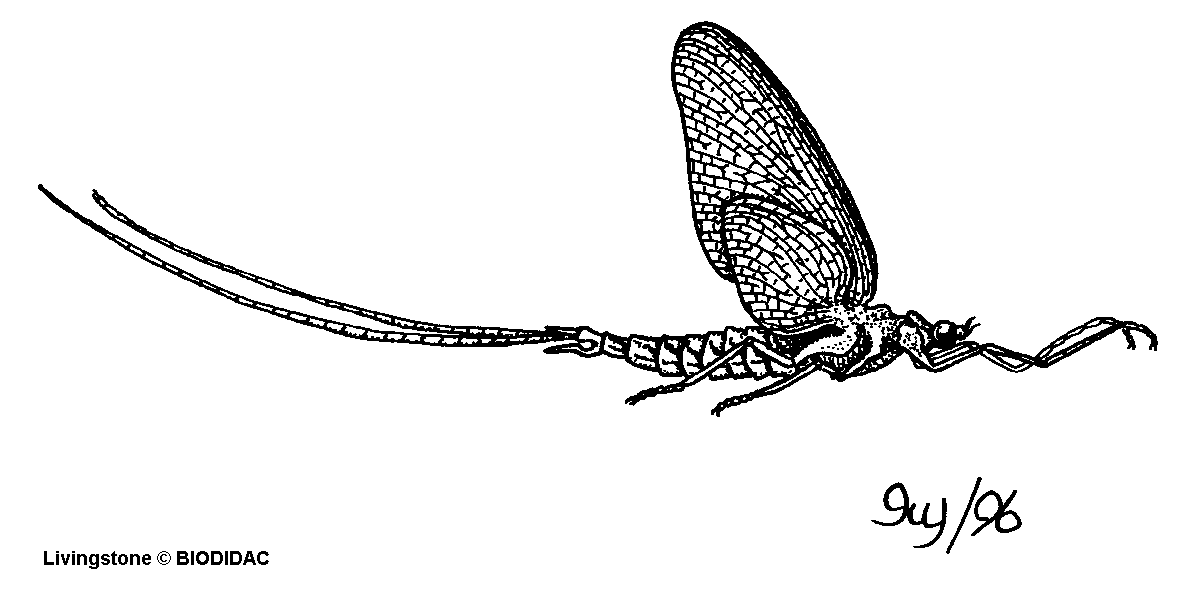
incomplete metamorphosis
aquatic nymphs (most of life cycle)
nymphs are very cool animals
common in clean streams
some species in lakes
winged adults
brief (ephemeral) adult life, just days
adults lack functional mouthparts
mission of adults: mating, egglaying, dispersal
the model for many fishing flies
adults sometimes extremely abundant
Diagram of mayfly nymph (aquatic)
(note abdominal tracheal gills on side of
abdomen)
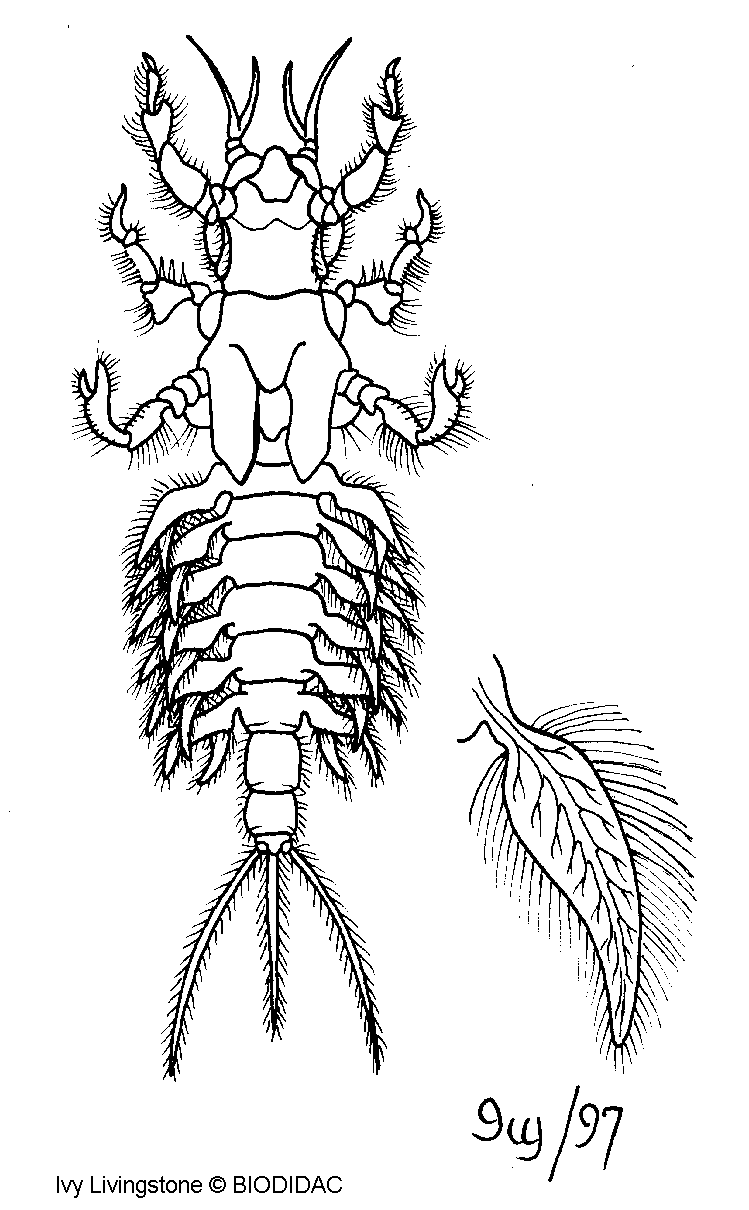
Mayfly nymph video
Mayfly adults emerging
Odonata - dragonflies and damselflies
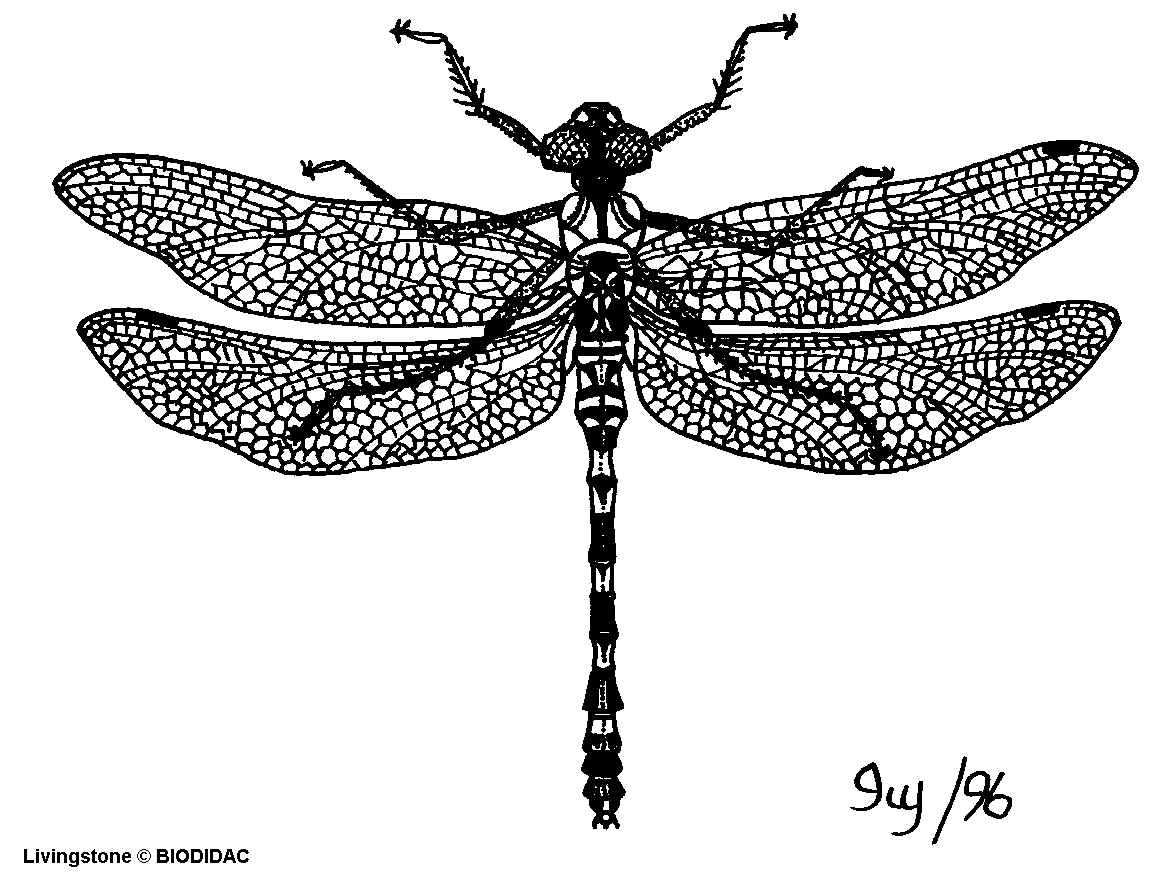
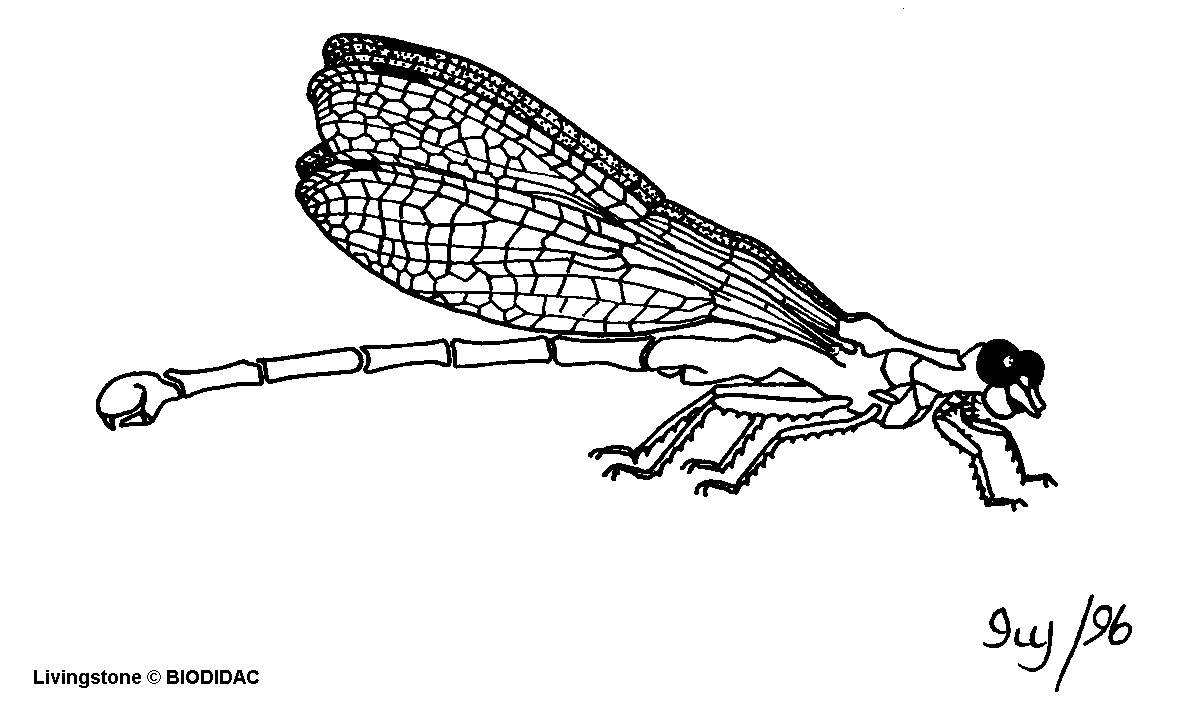
incomplete metamorphosis
chewing mouthparts
aquatic nymphs
Damselfly nymph - note the 3 tracheal gills at end of
abdomen (dragonfly nymphs lack these and have internal gills instead):
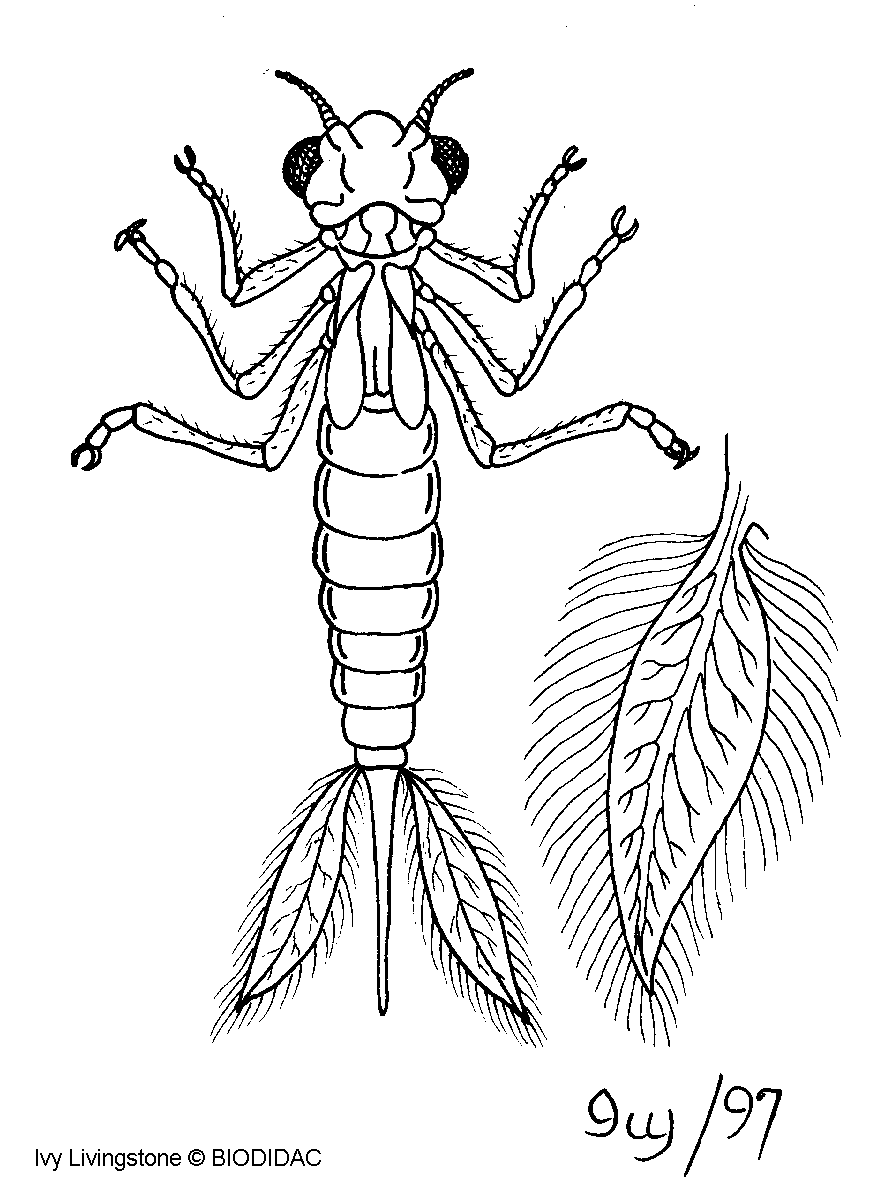
Nymphs are voracious predators
Use hinged, extensible lower jaw to strike at and grab
prey (see nice diagram at: http://media-2.web.britannica.com/eb-media/18/24018-004-C8846E21.jpg)
Very cool video
clip of dragonfly nymph feeding behavior
Dragonfly nymph catching and eating fish
Another great video of dragonfly nymphs hunting
adults are incredibly swift and agile in the air
adults are predators, typically of flying insects (caught
in flight)
Dragonfly adult hunting
dragonflies hold wings out when at rest:
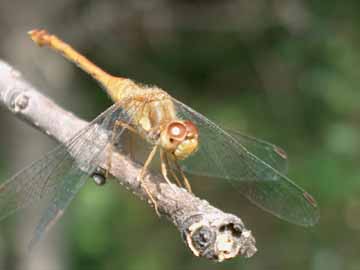
Dragonfly photo by W. Capman
damselflies fold wings back when at rest
A great intro to dragonflies and damselflies
Another useful page
Orthoptera - grasshoppers, katydids, and
crickets
(roaches, mantids, and walkingsticks used to be
included in this order, but most biologists place them in separate orders)
Incomplete metamorphosis
Chewing mouthparts
Large muscular hind legs for hopping
Males of many species (most species?) "sing"
to attract females
use wings (and sometimes legs) for sound production
grasshoppers, katydids, and crickets are generally herbivorous
Grasshoppers (most species active by day,
court and mate during day)

Katydids (typically large, green, and live
on plants or up in shrubs and trees, some sing by day but many others usually do their singing at night)
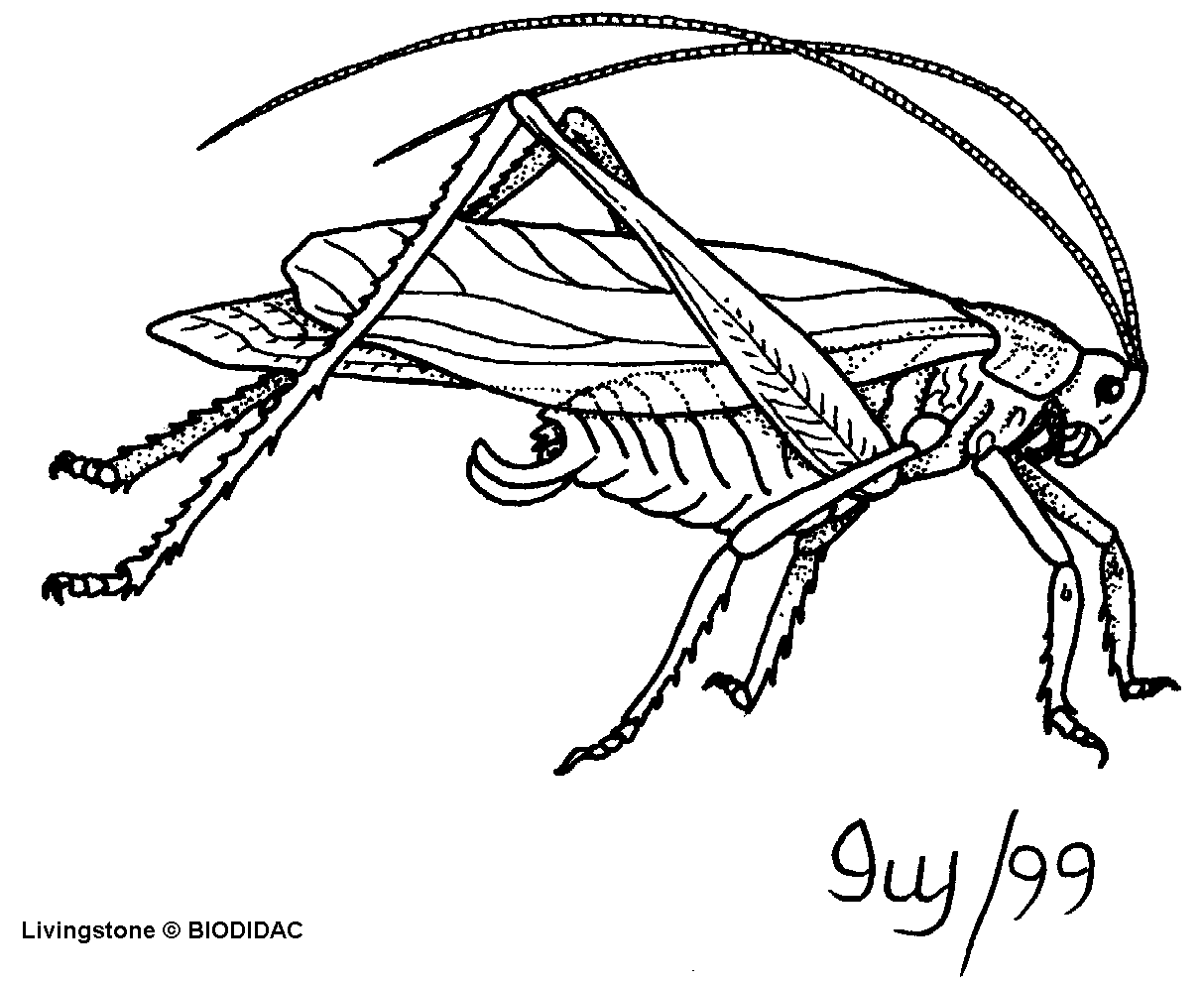
cool video showing katydid flying in slow motion: http://www.youtube.com/watch?v=WIovz948rYA
recordings of the songs of various katydid species (and some cricket songs too)
And then there's this
Crickets (most species live on ground, sing
and mate mostly at night)
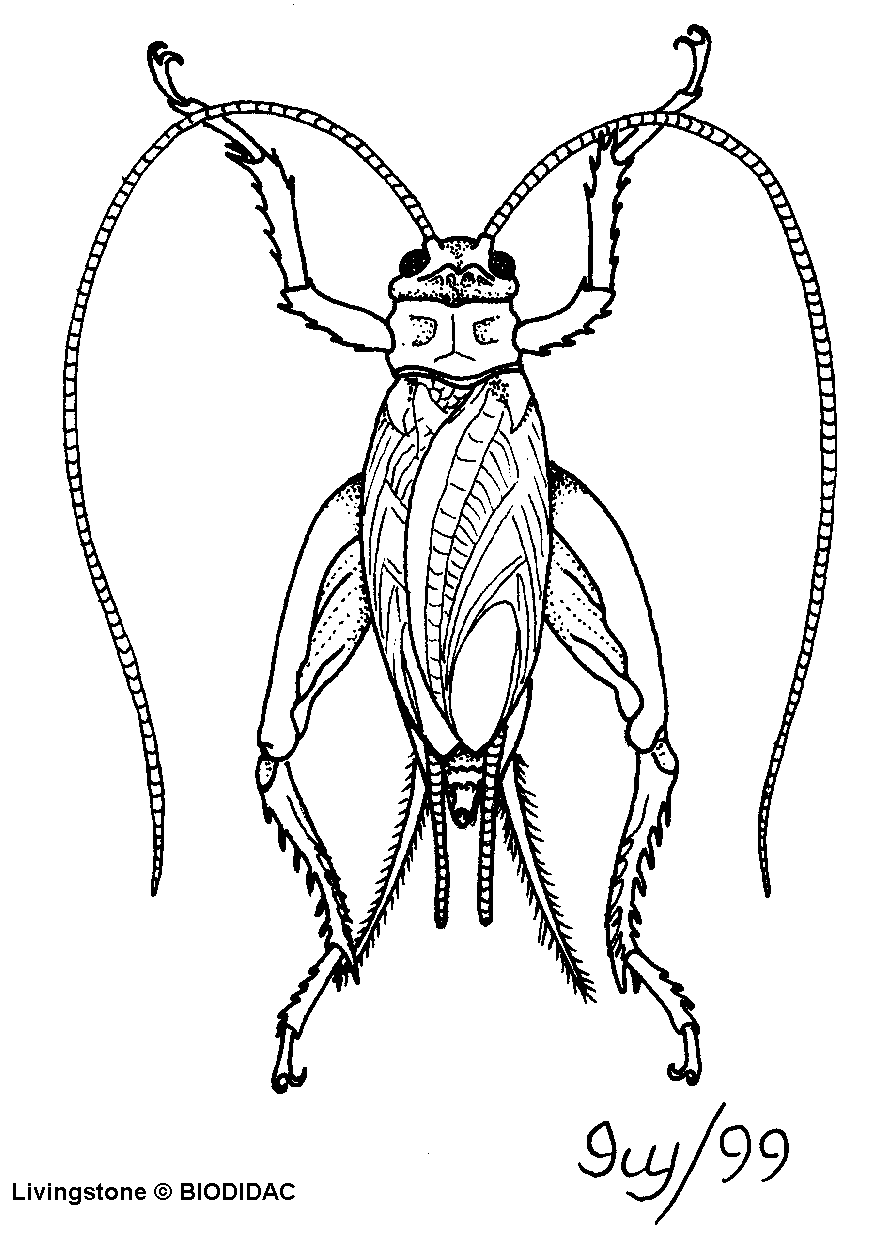
Isoptera - termites (Isoptera means "equal
winged")
Incomplete metamorphosis
Chewing mouthparts
Sort of look like white ants, but very different from
ants and not related)
see photo of worker termites and a winged reproducive individual
Feed on wood and other dead plant matter
cellulose is a major component of the foods termites
eat
animals lack the enzymes necessary to digest cellulose
termites have symbiotic cellulose-digesting bacteria
and other microorganisms in gut that allow termites to use cellulose as
a food source
Social
large colonies
only one reproductive female (the queen) and male per
colony
the reproductives are only termites with wings, but lose
wings once they settle down and start a colony
in some species, queen's abdomen becomes grotesquely
enlarged as she is transformed into an enormous egg factory!
See: http://www.ars.usda.gov/is/graphics/photos/formosan/k8085-21.htm
https://www.youtube.com/watch?v=RAeqkQa_cuQ
https://www.youtube.com/watch?v=xZ3pyC-s4Mg (note, despite the title of this video, termites are NOT ants!)
most of colony is non-reproductive workers
multiple castes, generally including reproductives, workers,
and soldiers
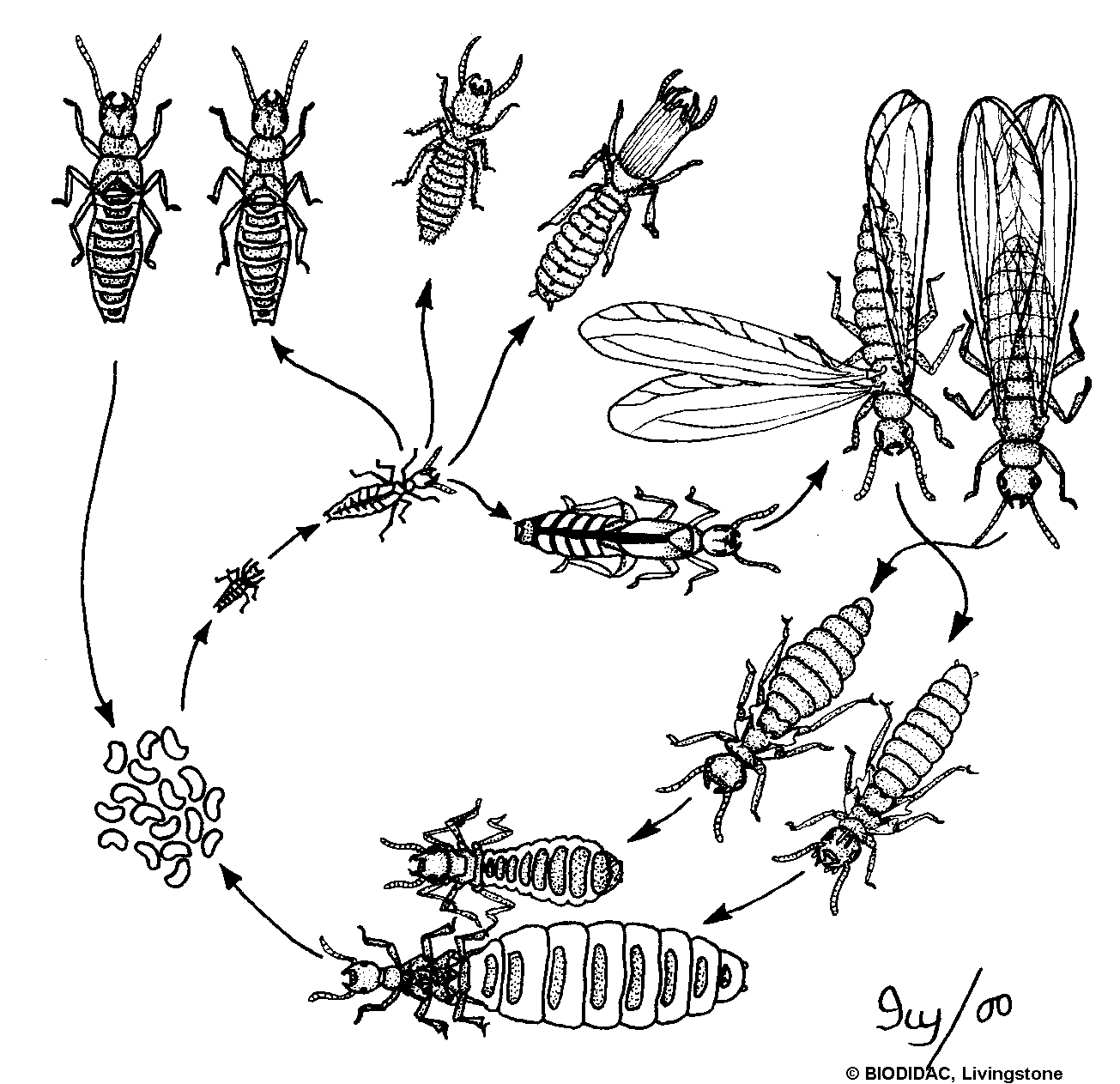
Where colonies live:
some species build tunnels underground, build mud tubes
up to food (e.g. wood), into which they tunnel to get food.
some species reside within wood
some species (in tropics) build enormous tower-like mounds
of mud (see: African
termite mound)
VERY important globally
break down plant material helping to return nutrients
to soil
swarming alates (wingd reproductive termites) are important
food source for many animals (for humans too!)
Termites are incredibly abundant in the tropics!
Only one species (the subterranean termite) lives as far north
as Minnesota
overwinters below frost line
not very common in MN
VERY common farther south
can destroy wooden structures
Links to photos and more information can be found at:
The
Eastern Subterranean Termite
Also see
Continued on Insects, Page 2




